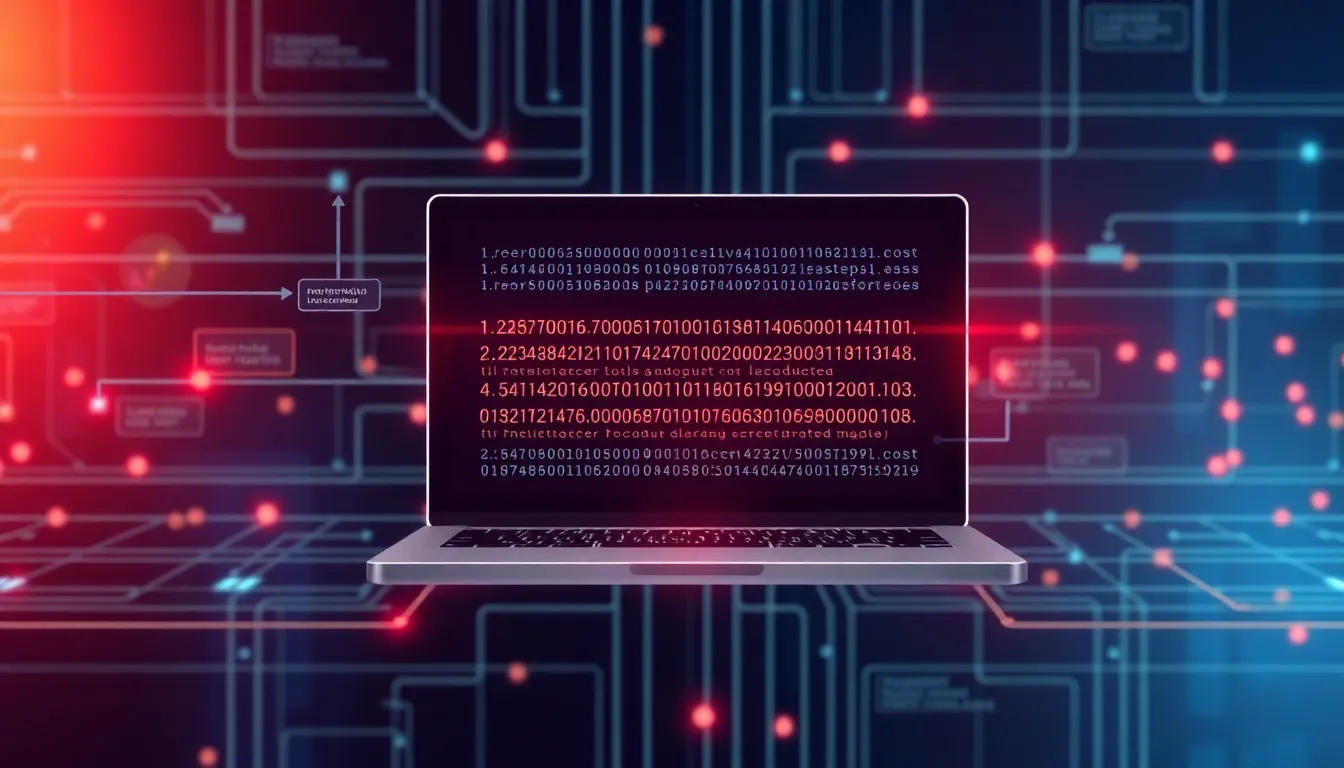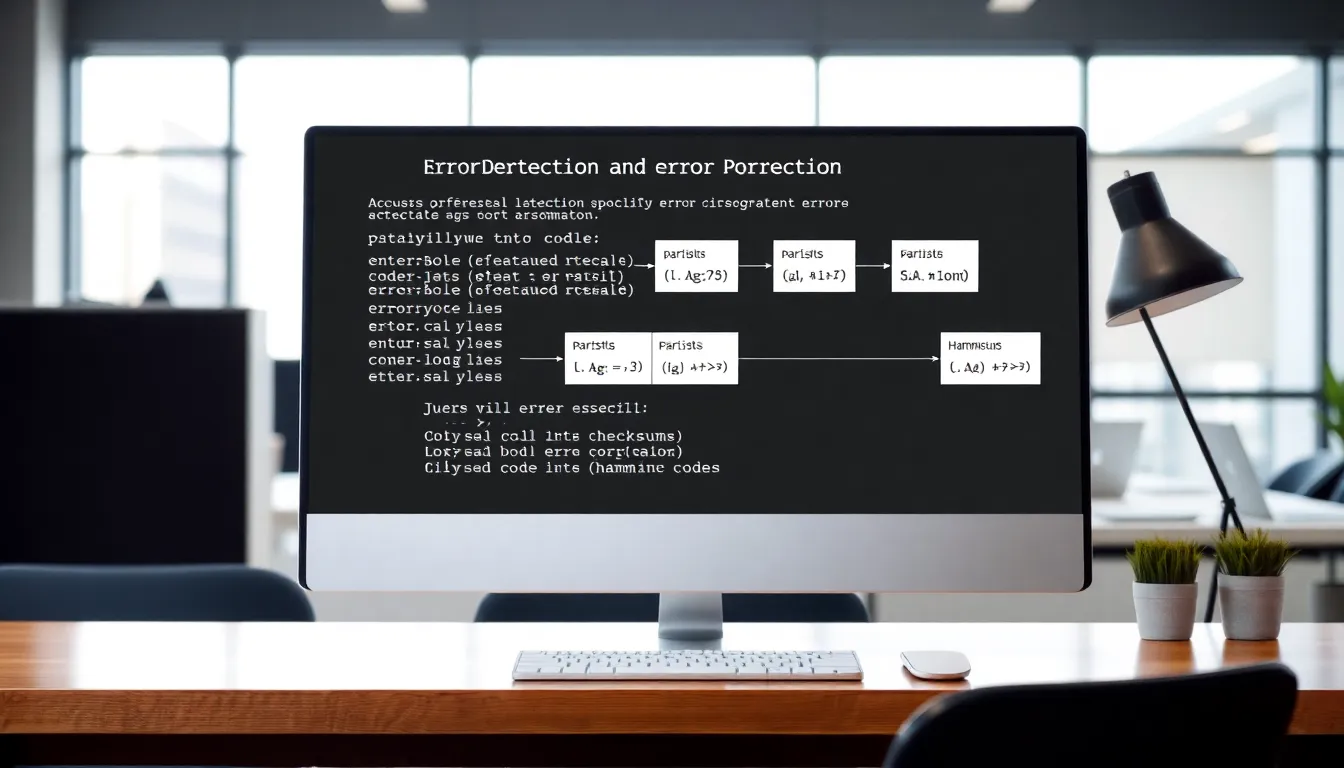In a world where technology rules, coding theory stands as the unsung hero behind the scenes. It’s the secret sauce that makes digital communication possible, ensuring that messages get through without a hitch. Think of it as the bouncer at a trendy nightclub, only letting the good data in while keeping the bad apples out.
Table of Contents
ToggleOverview Of Coding Theory
Coding theory plays a vital role in digital communication, ensuring data integrity and reliability. It enables the transmission of information while minimizing errors.
Definition And Importance
Coding theory involves the study of codes for transmitting data efficiently and accurately. This discipline ensures that information can be encoded, sent, and decoded correctly across various digital platforms. Effective coding schemes enhance the reliability of data transmission, which benefits applications like telecommunications and data storage. Various coding techniques such as error detection and correction codes are pivotal for maintaining data integrity, particularly in noisy communication environments. The significance of coding theory grows as technology advances, given its foundational role in modern computing and networking.
Historical Development
The roots of coding theory trace back to the 1940s, coinciding with the early days of digital communication. Researchers like Claude Shannon introduced concepts that revolutionized the field. He laid the groundwork for information theory, which includes pivotal principles of coding. In the subsequent decades, various coding schemes emerged, including block codes and convolutional codes. These innovations facilitated efficient data encoding and decoding methods. The evolution continued with developments in cyclic codes and turbo codes during the 1990s, enhancing error correction capabilities. Each phase in history demonstrates the ongoing need for robust coding solutions to address increasing data transmission demands.
Types Of Coding Techniques


Coding techniques primarily fall into two categories: error detection codes and error correction codes. Both types enhance data integrity during transmission.
Error Detection Codes
Error detection codes identify discrepancies in data. They allow systems to pinpoint errors without correcting them. Common examples include parity bits, which add a single bit to even or odd out data sets. Checksums, used in networking protocols, assess data integrity by calculating a value based on the data contents. Cyclic redundancy checks (CRC) provide a more robust mechanism, detecting errors in blocks of data. These techniques are essential for applications like file transfers, where ensuring accurate data reception is paramount. Without effective error detection methods, data corruption could go unnoticed, leading to significant issues.
Error Correction Codes
Error correction codes not only detect errors but also correct them. Systems leverage these codes to recover lost or corrupted information without needing retransmission. Hamming codes represent a widely used example, adding redundancy to enable error correction. Reed-Solomon codes, popular in CDs and QR codes, can correct multiple errors within a block of data. Convolutional codes offer a different approach, used in conjunction with algorithms for decoding, ensuring reliable data transmission in real-time applications. Implementing error correction techniques significantly boosts communication reliability across various digital platforms.
Applications Of Coding Theory
Coding theory plays a pivotal role in various applications, primarily in telecommunications and data storage. These applications highlight the practical significance of coding techniques in modern technology.
Telecommunications
Telecommunications relies heavily on coding theory to maintain data integrity during transmission. Error correction codes are essential in this field, as they ensure accurate message delivery despite potential interference. Hamming codes and Reed-Solomon codes exemplify the methods that enhance communication reliability. They allow systems to identify and correct errors, which directly impacts voice calls and internet data transfers. Efficiency increases as coding techniques optimize bandwidth usage, thereby facilitating higher data rates. Network protocols also integrate these codes to ensure that users receive clear, uninterrupted connections.
Data Storage
Data storage systems incorporate coding theory to protect information against corruption. Error detection codes like checksums and CRCs play a significant role in maintaining the integrity of stored data. These systems identify discrepancies during data retrieval, allowing for immediate rectification. Redundant storage methods further strengthen data reliability, reducing the risk of information loss. Convolutional codes also enhance storage efficiency, ensuring that backups remain accessible without errors. As a result, coding theory contributes directly to the secure management and retrieval of critical information across various storage mediums.
Challenges In Coding Theory
Coding theory faces significant challenges that impact its development and application. These challenges can primarily be categorized into theoretical limitations and practical implementations.
Theoretical Limitations
Fundamental constraints exist within coding theory that influence code efficiency. Shannon’s limit defines the maximum achievable data transmission rates for a given noise level, posing challenges in extreme environments. Additionally, the trade-off between complexity and performance hampers the design of codes that effectively balance efficiency with error correction capabilities. Researchers often grapple with developing approaches that maximize protection against error while minimizing redundancy. The finite nature of coding schemes also complicates scalability as data transmission requirements increase.
Practical Implementations
Real-world applications of coding theory encounter obstacles that impede implementation efficiency. Factors such as computational resources dictate the practicality of error correction mechanisms, impacting performance in resource-constrained environments. Further complicating matters, varying transmission channels introduce distinct noise characteristics that adjust error correction strategies accordingly. Organizations also face challenges integrating advanced coding techniques within existing infrastructure, as legacy systems frequently lack compatibility with modern approaches. As data volumes continue to surge, the need for adaptable and efficient coding solutions grows increasingly critical.
Future Directions In Coding Theory
Coding theory continues to evolve, driven by advancements in technology and increasing demands for data transmission efficiency. The future promises innovative approaches to enhance data integrity and reliability.
Emerging Technologies
Quantum computing significantly impacts coding theory, introducing new paradigms for error correction. Improved algorithms for quantum channels enable robust performance even in noisy environments. Machine learning algorithms also enhance code optimization by predicting error patterns and adapting coding strategies in real time. Furthermore, the rise of 5G technology demands more efficient coding techniques to support higher data rates and lower latency. Innovations in low-density parity-check codes can address these needs. These technologies facilitate higher performance across various applications, driving the field of coding theory into new territories.
Research Trends
Current research focuses on developing codes that efficiently balance complexity and performance. Researchers emphasize lightweight coding solutions suitable for resource-constrained environments. Efforts are dedicated to exploring algorithms that improve error correction without significantly increasing processing power. Collaboration among academic institutions and industry experts promotes knowledge exchange and accelerates advancements. Trends point towards hybrid models combining multiple coding techniques to improve data integrity in real time. Investigations into network coding concepts are gaining traction, offering solutions to enhance data throughput and network reliability. Through these trends, coding theory adapts to meet the dynamic demands of modern communication systems.










